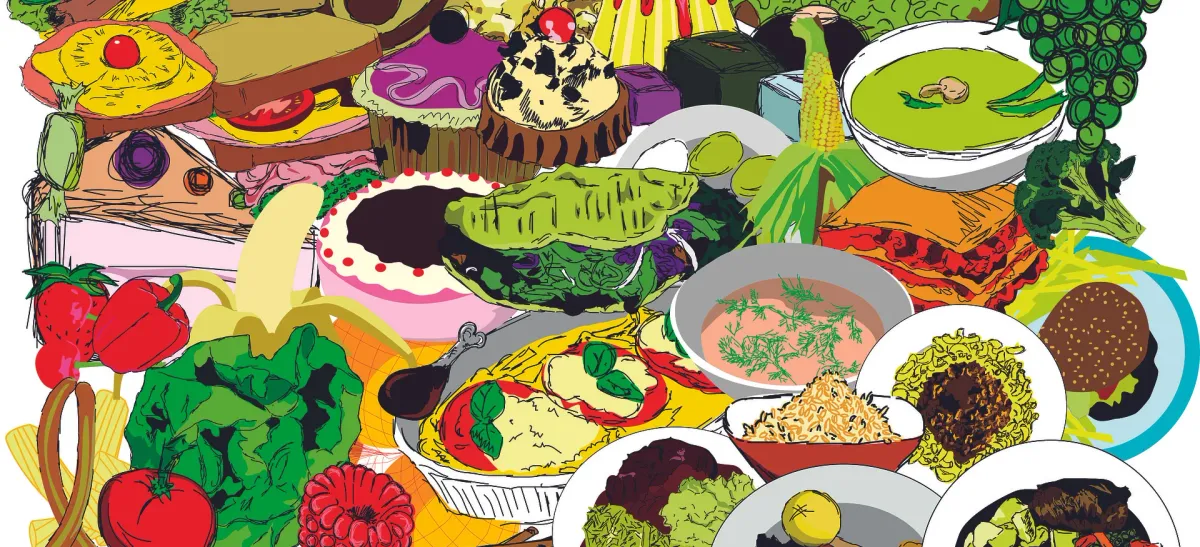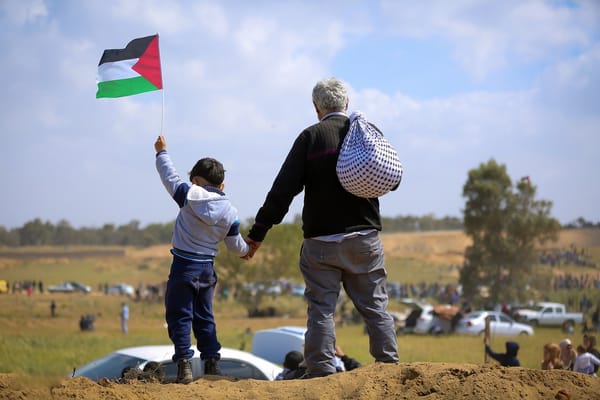How Distance Brought Me Closer to the Cuisine of My Disappearing Minority
Living in America, I once ditched dhandar for dumplings and sidestepped saas-ni-macchi for steak, but the culture of Parsi Zoroastrians lives through me - and through the food I brought with me.

Access the Audio Read version of this article directly on Spotify for Podcasters.
"In a colony, doors are continually flung open, and dishes perpetually exchange hands — a round-the-clock transferring of food from cut-glass serving bowls to more practical melamine dishes and back again; an endless potluck."
On many mornings in my new home in upstate New York, my partner and I wrestle over a bowl of semolina pudding, which my family in India would call ravo. We eat the sweet, milky concoction for breakfast, even though it tastes very much like dessert. Back home, it’s more birthday breakfast than a morning meal, but my partner is new to ravo and wants it as often as he wants nankhatai biscuits - the melt-in-the-mouth shortbread flavored with cardamom - which is often.
I’m also delighted when he requests the pattice (meat and potato cutlets) that I’ve modified slightly from my grandmother’s recipe. I still can’t get my favorite breakfast, akuri - scrambled egg spiced with ginger-garlic, green chilies, and tomatoes - to taste close enough to my mother’s, but that doesn’t stop me from routinely trying to do so.
I think more often now of my epicurean ethno religious community and how fast we’re disappearing. We’re already one of the world’s smallest communities, the Parsi Zoroastrians — followers of Prophet Zarathustra, from the Persian Empire with kings Cyrus and Darius and Xerxes, who fled persecution in Persia centuries ago to where we’re now primarily based, in India. With our population dwindling, we may not be around much longer, but perhaps our scrumptious, syncretic cuisine, sprinkled over with the flavors of various continents, will prevail.
After all, at any event involving Parsis, the food is likely to be the cynosure of all eyes. “What’s for lunch” comes pretty quickly after you take your first bite of breakfast — usually “everything-on-eggs” as my partner says. He’s quickly learning the ways, adding everything from potato chips and ground meat to vegetables over his fried eggs in the morning in typical’ something par eedu style. The attention placed on our meals is rivaled only by Parsi (read: very large) pegs of dark rum or whiskey on the rocks, possibly some shandy or Duke’s raspberry soda for the teetotalers.
Memories from my childhood, mostly stolen from my mother, include innovative ways to ‘wipe my plate clean’ as my father always insisted, without actually consuming any food I didn’t particularly enjoy: my toddler arms smeared with yellow lentil gravy — we call this light, delicious dish dhandar, one of the first Parsi dishes you can feed your child because of its simple makeup. The soaked split pigeon peas are ever-so-lightly flavored with turmeric and salt, sometimes with a dollop of butter, then whisked to a smooth, creamy consistency - as thick or thin as you’d like it - before it’s poured over fluffy white basmati rice.
I had many problems with this dish when I was a child. I can’t remember ever eating it without a fuss, even if accompanied by my favorite, kolmi-no-patio — prawns cooked in a spicy tomato sauce. Having had enough distance from it here in the US, where I can eat anything I want, I find myself now ceaselessly craving the buttery lentils and fluffy white rice.
Dhansak, a much sought-after dish, is another that didn’t delight my palate till very recently. I now crave the grainy, pumpkin-lentil-spiced gravy filled with juicy bits of mutton — or as my grandmother made it — with tiny, spicy meatballs. I occasionally succumb to the ready-to-eat versions that are often the saving grace for immigrants who still don’t own pressure-cookers, but they don’t taste quite like home.
I couldn’t say definitively what corners of the Earth the inspiration for each dish comes from. There are obvious influences from Persia, the land we fled, India, the land we fled to, the Portuguese, British, Mughal empires, and dishes inspired by wherever we’ve settled since — Canada, New Zealand, Zanzibar (once home to Freddie Mercury, the world’s most famous Parsi)… never mind the subtle but salient differences from one kitchen to the next.
We grew up in a colony, that is, a gated community filled with Parsis, all cooking their own versions of this cuisine. In a colony, doors are continually flung open, and dishes perpetually exchange hands — a round-the-clock transferring of food from cut-glass serving bowls to more practical melamine dishes and back again; an endless potluck. There’s more to this exchange than the food itself. As children, leftovers meant we got to hop over to a neighbor’s house — who would we pick this time? Always a set of favorites, our mothers pretending not to have the time to talk, “I’ll just pop this over,” and then spending hours leaning against door frames or bent over banisters in conversation about everything and nothing, the food just an excuse to squeeze in some diurnal hobnobbing on the stairwell.
My family didn’t always eat a lot of Parsi food. We liked the variety and the food that surrounded us in the colony, at grandparents’ homes, and special events — we grew so tired of.
Now, I spend hours perfecting my lagan-nu-custard (think crème caramel with a twist), thinking of where to find pomfret in New York so I can make patra-ni-macchi (steamed in banana leaves, with a sweet-spicy green chutney), and stocking up on rosewater, cardamom, saffron and nutmeg. I try to summon up the energy to make a successful mutton pulao (like a pilaf, accompanied by lentil gravy) and search for a way to import the topli paneer (soft cheeses floating in salty juices, in tiny green baskets) that no homemade versions can rival.
I miss the hobnobbing, the continuous food-swaps, and the smells of breakfast-lunch-dinner floating in from five different kitchens all at once. Then, watching my partner - who not so long ago was so oblivious to Parsi cuisine - eagerly thumb through the recipes my mother hand-wrote for me, I think perhaps this cuisine may outlive the population that concocted it after all.





